
Director
Echo Velvet Ltd and The Makers Of will produce and manage a global week of activity that celebrates the re-release of the 50th anniversary edition of Ziggy Stardust: The Motion Picture, with full marketing support from Warner Music and the David Bowie estate. Our version of the film, which features musician Jeff Beck, has never been seen before in cinema.

Himself
Esta es la historia de estrellato de Herbert Khaury, más conocido como Tiny Tim, una fábula moderna sobre uno de los personajes más peculiares del mundo del espectáculo.

Director
Concert documentary of The National's performance at Brooklyn Academy of Music in 2010, interspersed with interview footage of the band.

Director
The complete collection of Depeche Modes videos.

Self
In 1998, documentary filmmaker Robert Drew and his associates attend the Museum of Tolerance.

Himself
A conversation between Jill Drew and D.A. Pennebaker.

Director
Renowned filmmakers D A Pennebaker and Chris Hegedus follow determined animal rights activist Steven Wise into the courtroom for an unprecedented battle that seeks to utilize the writ of habeas corpus to expand legal “personhood” to include certain animals. Wise’s unusual plaintiffs—chimpanzees Tommy and Kiko, once famed showbiz stars—are now living in filth, struggling to survive. Wise and his impassioned legal team take us into the field, revealing gripping evidence of such abuse and plunging us into the intricacies of their case as they probe preconceived notions of what it means to be a non-human animal.
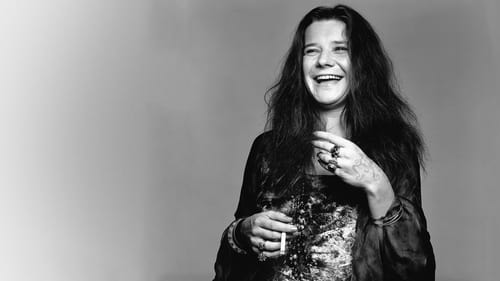
Himself
Documental sobre la legendaria cantante norteamericana Janis Joplin. La artista americana Cat Power, cantante de rock de origen sureño, narra en primer persona cómo Janis Joplin llegó a convertirse en una estrella, a través de las cartas que Joplin escribió durante años a sus familiares, amigos y colaboradores, antes de su fatídica muerte a los 27 años.

Himself
Haunted by uncanny similarities between Nazi stage techniques and the showmanship employed by modern entertainers, a filmmaker investigates the dangers of audience manipulation and leader worship.

Self
A 38-year journey that the director began in 1972 as a young filmmaker and, shooting off and throughout many years, the director filmed many and various encounters between Ricky, his friends and contemporaries including Henri Langlois, Jean Rouch, Jean-Luc Godard, DA Pennebaker, Robert Drew, and others. Mixing her own footage with film clips and rare images from Leacock's personal film archives, this film pays homage to the director's mentor and, most importantly, allows him to tell us the story of his long film making career in his own words.

Colleagues, friends and specialists pay tribute to the filmmaker Mario Ruspoli in a portrait that mixes encounters, archive images and film excerpts. With testimonies from Richard Leacock, Albert Maysles, Edgar Morin, D.A. Pennebaker and others.

Self
Documentary by Luc Lagier exploring Godard's career as a filmmaker, the production of Breathless and his influence and his relationship with American cinema.

Director
La patiserie es para Francia una cuestión idiosincrática. La excelencia no es algo a lo que la crema de los patissières franceses aspiran, sino algo que necesitan. Esa necesidad tiene un curioso título honorario: Mejor Obrero de Francia, categoría exclusiva a la que se accede luego de superar tres días intensivos de hornear y moldear con precisión, delicadeza y velocidad. El tándem Pennebaker y Hegedus nos lleva a la cocina de ese mundillo y observa, con tierna complicidad, a los sufridos candidatos en su rally culinario, al ritmo dulce de Django Reinhardt. Hay algo conmovedor en ver a estos tipos maduros construyendo esculturas de azúcar como nenes, embelesados con su propia creación mientras a su alrededor se los ausculta con el rigor de un campo de concentración.

Director
Those who played prominent roles in Clinton's 1992 Presidential campaign return to discuss how politics and the media have changed since that time.

Self
Short documentary on the life and work of photographer and filmmaker Morris Engel

Camera Operator
A collection of rare outtakes and performances from Pennebaker's 1965 documentary Don't Look Back.

Director
A collection of rare outtakes and performances from Pennebaker's 1965 documentary Don't Look Back.
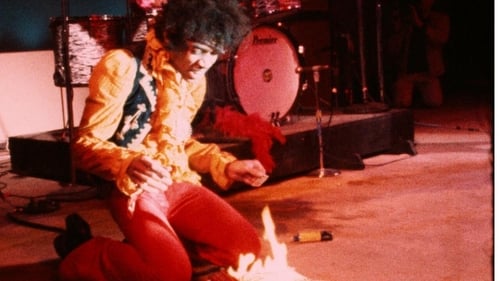
Director
Esta presentación especial ofrece todo el metraje restante de la aparición incendiaria de Jimi Hendrix en el Festival Pop de Monterey en 1967. Clásicos de Hendrix como "Hey Joe" y "Purple Haze" se entregan con un sonido y una visión cristalinos, con Eddie Kramer (quien fue el de Hendrix ingeniero original) dando nueva vida al audio con una nueva mezcla.

Director
Assembled by some of the nation's top documentary filmmakers, this centerpiece film in HBO's 'Addiction' campaign features insights from experts on trends and treatments in the ongoing battle against drug and alcohol abuse. This documentary consists of nine segments that focus on case studies and cutting-edge treatments that challenge traditional beliefs about addiction.

Director
CINEMA16 celebrates the short film by showcasing some of the best classic and award-winning shorts on DVD. With over three hours of films CINEMA16: AMERICAN SHORT FILMS is essential viewing for anyone with an interest in the moving image. Films include Gus Van Sant's 1982 adaptation of a William S. Burroughs short story, The Discipline Of DE, Tim Burton's early stop motion animated classic Vincent, George Lucas' USC short Freiheit, Alexander Payne's previously unreleased UCLA graduation short Carmen, Paperboys by Mike Mills, D.A. Pennebaker's Duke Ellington scored Daybreak Express, Todd Solondz's NYU short Feelings, along with Oscar Winner The Lunch Date by Adam Davidson, Stefan Nadelman's multi- award winning documentary Terminal Bar, Joe Nussbaum's cult classic George Lucas In Love and 2006 Sundance Winner The Wraith Of Cobble Hill by Adam Parrish King. Films are subtitled in French, German, Italian, Spanish and Japanese, and include commentaries from many of the directors involved.
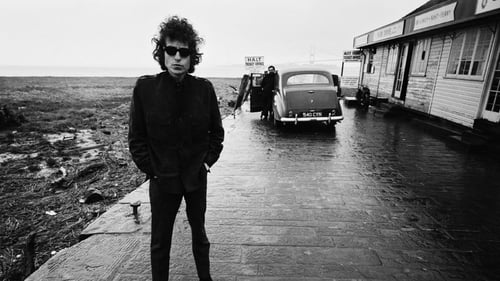
Self
Extraordinaria historia del viaje de Bob Dylan desde sus raíces en Minnesota hasta la época de sus comienzos en los cafés del Greenwich Village, pasando por su sonada ascensión al estrellato del pop en 1966. Joan Baez, Allen Ginsberg y otros comparten sus pensamientos y sentimientos sobre el joven cantante que cambiaría para siempre la música popular. Incluye entrevistas exclusivas y, además, secuencias y actuaciones inéditas.

Executive Producer
A cutman at the end of his career struggles to reclaim his true lifelong job.

With a set of drums and an 8mm color home movie camera, Mickey Jones toured the world in 1966 with Bob Dylan and The Band. He captured on film what became known as "The tour that changed Rock and Roll forever." The booing crowds, the scathing reviews, the stomping feet, the infamous catcall of "Judas!" ... all of this in response to Dylan trading in his acoustic folk guitar for an electric sound. Now, for the first time, drummer-turned-actor Mickey Jones (Sling Blade, Home Improvement), with the help of Director Joel Gilbert, chronicles the legendary 1966 Bob Dylan World Tour through his recently discovered home movies. The updated release includes new, exclusive full-length interviews with Charlie Daniels, Johnny Rivers, 1966 World Tour and Gaslight tapes sound man Richard Alderson, and new insights and revelations by Mickey Jones.

Director
Los documentalistas DA Pennebaker y Chris Hegedus y el periodista Roger Friedman tenían una misión: ponerse al día con los grandes cantantes de soul de los sesenta y primeros setenta. Muchas de las leyendas del soul murieron a una edad temprana: Marvin Gaye, Otis Redding, etc. Pero aquellos que sobrevivieron han sido largamente ignorados... hasta ahora. (FILMAFFINITY)

Editor
On May 24, 2000, the historic Ryman Auditorium was booked to offer Nashvillians an evening of sublime beauty. Label executives and soundtrack producers so loved the music of O Brother, Where Art Thou? that they brought it to life as a benefit concert for the Country Music Hall of Fame. Filmmakers Joel and Ethan Coen loved it so much that they hired famed documentary filmmaker D.A. Pennebaker to record the show for posterity. The concert that unfolded that night was one of the greatest musical moments in the annals of Music City. Performers: John Hartford, Alison Krauss, Emmylou Harris, Gillian Welch, Chris Thomas King, The Cox Family, Fairfield Four, Union Station, Colin Linden, The Nashville Bluegrass Band, The Peasall Sisters, Ralph Stanley, David Rawlings, The Whites.

Cinematography
On May 24, 2000, the historic Ryman Auditorium was booked to offer Nashvillians an evening of sublime beauty. Label executives and soundtrack producers so loved the music of O Brother, Where Art Thou? that they brought it to life as a benefit concert for the Country Music Hall of Fame. Filmmakers Joel and Ethan Coen loved it so much that they hired famed documentary filmmaker D.A. Pennebaker to record the show for posterity. The concert that unfolded that night was one of the greatest musical moments in the annals of Music City. Performers: John Hartford, Alison Krauss, Emmylou Harris, Gillian Welch, Chris Thomas King, The Cox Family, Fairfield Four, Union Station, Colin Linden, The Nashville Bluegrass Band, The Peasall Sisters, Ralph Stanley, David Rawlings, The Whites.

Director
On May 24, 2000, the historic Ryman Auditorium was booked to offer Nashvillians an evening of sublime beauty. Label executives and soundtrack producers so loved the music of O Brother, Where Art Thou? that they brought it to life as a benefit concert for the Country Music Hall of Fame. Filmmakers Joel and Ethan Coen loved it so much that they hired famed documentary filmmaker D.A. Pennebaker to record the show for posterity. The concert that unfolded that night was one of the greatest musical moments in the annals of Music City. Performers: John Hartford, Alison Krauss, Emmylou Harris, Gillian Welch, Chris Thomas King, The Cox Family, Fairfield Four, Union Station, Colin Linden, The Nashville Bluegrass Band, The Peasall Sisters, Ralph Stanley, David Rawlings, The Whites.

Producer
Friends since high school, 20-somethings Kaleil Isaza Tuzman and Tom Herman have an idea: a Web site for people to conduct business with municipal governments. This documentary tracks the rise and fall of govWorks.com from May of 1999 to December of 2000, and the trials the business brings to the relationship of these best friends. Kaleil raises the money, Tom's the technical chief. A third partner wants a buy out; girlfriends come and go; Tom's daughter needs attention. And always the need for cash and for improving the site. Venture capital comes in by the millions. Kaleil is on C-SPAN, CNN, and magazine covers. Will the business or the friendship crash first?

Self
With the help of her mother, family, friends, and fellow musicians, Aiyana Elliott reaches for her father, legendary cowboy troubadour, Ramblin' Jack Elliott. She explores who he is and how he got there, working back and forth between archival and contemporary footage. Born in 1932 in Brooklyn, busking through the South and West in the early 50s, a year with Woody Guthrie, six years flatpicking in Europe, a triumphant return to Greenwich Village in the early 60s, mentoring Bob Dylan, then life on the road, from gig to gig, singing and telling stories. A Grammy and the National Medal of Arts await Jack near the end of a long trail. What will Aiyana find for herself?

Director
A documentary portrait of the backstage efforts to stage the play Moon Over Buffalo on Broadway.

Director

Director
Woodstock Diary was originally broadcasted on U.S. TV in August 1994 - in honor of the 25th anniversary of the event. Later it was released on DVD with remastered 5.1 sound. It includes performances not shown in the Woodstock movie but not exclusively. Between the songs there are recent interviews with the producers / organizers of Woodstock Joel Rosenman, John Roberts, Michael Lang, the stage announcer Wavy Gravy and Lisa Law (a member of the Hog Farm who helped out at the festival).
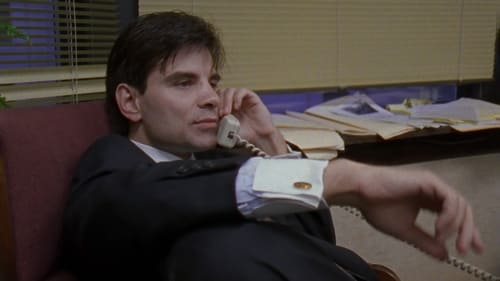
Cinematography
A behind-the-scenes documentary about the Clinton for President campaign, focusing on the adventures of spin doctors James Carville and George Stephanopoulos.

Editor
A behind-the-scenes documentary about the Clinton for President campaign, focusing on the adventures of spin doctors James Carville and George Stephanopoulos.

Director
A behind-the-scenes documentary about the Clinton for President campaign, focusing on the adventures of spin doctors James Carville and George Stephanopoulos.
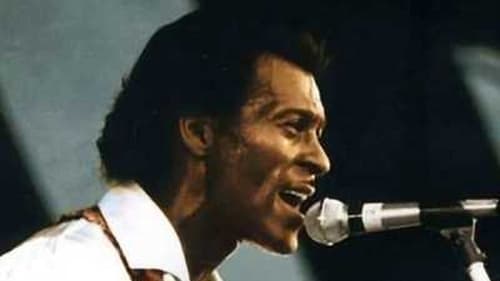
Camera Operator
A pioneer in the world of rock-'n'-roll guitar, Chuck Berry has created a legacy that spans decades. Berry performs some of his greatest hits and all-time favorites in this concert video that was filmed on September 13, 1969 at 'Toronto Rock'n'Roll Revival.' The Concert includes the songs "Rock and Roll Music," "Long Live Rock and Roll," "Johnny B. Goode," "Promised Land," "Carol," "Hoochie Koochie Man," "Maybellene," "Too Much Monkey Business," "Reelin' and Rockin'," "Sweet Little Sixteen" and "In the Wee, Wee Hours."

Director
A pioneer in the world of rock-'n'-roll guitar, Chuck Berry has created a legacy that spans decades. Berry performs some of his greatest hits and all-time favorites in this concert video that was filmed on September 13, 1969 at 'Toronto Rock'n'Roll Revival.' The Concert includes the songs "Rock and Roll Music," "Long Live Rock and Roll," "Johnny B. Goode," "Promised Land," "Carol," "Hoochie Koochie Man," "Maybellene," "Too Much Monkey Business," "Reelin' and Rockin'," "Sweet Little Sixteen" and "In the Wee, Wee Hours."
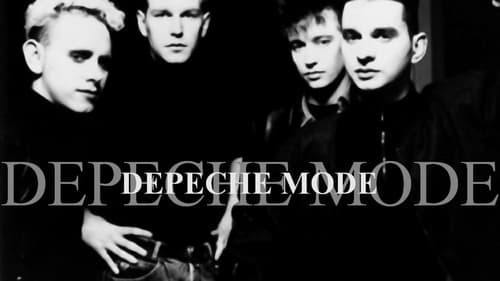
Editor
Depeche Mode se prepara para su concierto número 101 y último de su masiva gira mundial "Music for the Masses" en el Rose Bowl Stadium de Pasadena, California, mientras un grupo de seguidores que ganaron un concurso viajan al concierto por todo Estados Unidos en un autobús.

Director
Depeche Mode se prepara para su concierto número 101 y último de su masiva gira mundial "Music for the Masses" en el Rose Bowl Stadium de Pasadena, California, mientras un grupo de seguidores que ganaron un concurso viajan al concierto por todo Estados Unidos en un autobús.

Editor
Concierto en directo del grupo inglés de música electrónica Depeche Mode, ofrecido el 18 de junio de 1988 en el estadio Rose Bowl de Pasadena (California) y correspondiente a la gira "Tour for the Masses" con motivo de su álbum "Music for the Masses" de 1987. Dará lugar al famoso álbum en directo "101" publicado en 1989, primer álbum en directo del grupo y también su primer álbum doble. Este concierto fue el número 101 -y el último- de la gira, motivo por el que este álbum recibió este título. Además sirvió de base para el documental "Depeche Mode: 101" de Pennebaker en 1989. El concierto no está completo, y únicamente se incluyen 10 de los 18 los temas que se tocaron esa noche, ya que Pennebaker desconocía totalmente al grupo hasta antes de que se le encargara el documental, y se le dio total libertad acerca de como captar al grupo. Según el site oficial de Depeche Mode, las 8 canciones restantes sólo fueron grabadas en audio para la edición del álbum.

Camera Operator
Concierto en directo del grupo inglés de música electrónica Depeche Mode, ofrecido el 18 de junio de 1988 en el estadio Rose Bowl de Pasadena (California) y correspondiente a la gira "Tour for the Masses" con motivo de su álbum "Music for the Masses" de 1987. Dará lugar al famoso álbum en directo "101" publicado en 1989, primer álbum en directo del grupo y también su primer álbum doble. Este concierto fue el número 101 -y el último- de la gira, motivo por el que este álbum recibió este título. Además sirvió de base para el documental "Depeche Mode: 101" de Pennebaker en 1989. El concierto no está completo, y únicamente se incluyen 10 de los 18 los temas que se tocaron esa noche, ya que Pennebaker desconocía totalmente al grupo hasta antes de que se le encargara el documental, y se le dio total libertad acerca de como captar al grupo. Según el site oficial de Depeche Mode, las 8 canciones restantes sólo fueron grabadas en audio para la edición del álbum.

Director
Concierto en directo del grupo inglés de música electrónica Depeche Mode, ofrecido el 18 de junio de 1988 en el estadio Rose Bowl de Pasadena (California) y correspondiente a la gira "Tour for the Masses" con motivo de su álbum "Music for the Masses" de 1987. Dará lugar al famoso álbum en directo "101" publicado en 1989, primer álbum en directo del grupo y también su primer álbum doble. Este concierto fue el número 101 -y el último- de la gira, motivo por el que este álbum recibió este título. Además sirvió de base para el documental "Depeche Mode: 101" de Pennebaker en 1989. El concierto no está completo, y únicamente se incluyen 10 de los 18 los temas que se tocaron esa noche, ya que Pennebaker desconocía totalmente al grupo hasta antes de que se le encargara el documental, y se le dio total libertad acerca de como captar al grupo. Según el site oficial de Depeche Mode, las 8 canciones restantes sólo fueron grabadas en audio para la edición del álbum.
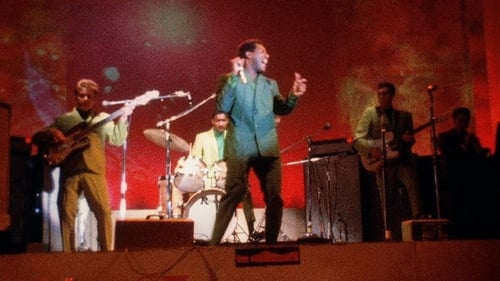
Camera Operator
Renowned documentary filmmaker D.A. Pennebaker captures Otis Redding in his ascendancy, singing at the historic Monterey International Pop Festival in June 1967. Comedian Tom Smothers introduces Redding to a crowd that is leaving -- until Redding grabs them with his charged rendition of "Shake." Redding's performance also includes "Respect" (which he wrote), "I've Been Loving You Too Long," "Satisfaction," and "Try a Little Tenderness." Tragically, Redding died in a plane crash six months later. An innovative filmmaker who started in the 1950s making experimental films, Pennebaker garnered an Oscar nomination for Best Documentary Feature in 1993 for The War Room, his behind-the-scenes look at Bill Clinton's 1992 campaign. His other subjects have included Norman Mailer, Bob Dylan, and David Bowie.
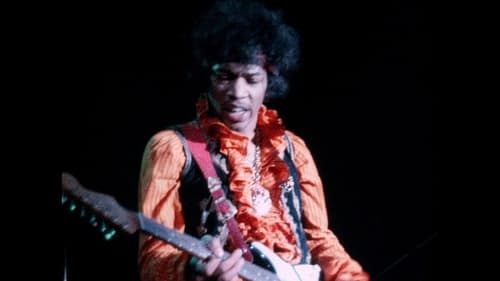
Camera Operator
It's no exaggeration to say this might be the most intense and groundbreaking 45-minute performance in the history of rock. Jimi Hendrix's debut American set at 1967's Monterey Pop Festival is generally considered one of the most radical and legendary live shows ever. Virtually unknown to American audiences at the time, even though he was already an established entity in the UK, Hendrix and his two-piece Experience explode on stage, ripping through blues classics "Rock Me Baby" and Howlin' Wolf's "Killing Floor," interpreting and electrifying Bob Dylan's "Like a Rolling Stone," debuting songs from his yet-to-be-released first album and closing with the now historic sacrificing/burning of his guitar during an unhinged version of "Wild Thing" that even its writer Chip Taylor would never have imagined. Hendrix uses feedback and distortion to enhance the songs in whisper-to-scream intensity, blazing territory that had not been previously explored with as much soul-frazzled power.

Director
Renowned documentary filmmaker D.A. Pennebaker captures Otis Redding in his ascendancy, singing at the historic Monterey International Pop Festival in June 1967. Comedian Tom Smothers introduces Redding to a crowd that is leaving -- until Redding grabs them with his charged rendition of "Shake." Redding's performance also includes "Respect" (which he wrote), "I've Been Loving You Too Long," "Satisfaction," and "Try a Little Tenderness." Tragically, Redding died in a plane crash six months later. An innovative filmmaker who started in the 1950s making experimental films, Pennebaker garnered an Oscar nomination for Best Documentary Feature in 1993 for The War Room, his behind-the-scenes look at Bill Clinton's 1992 campaign. His other subjects have included Norman Mailer, Bob Dylan, and David Bowie.

Editor
It's no exaggeration to say this might be the most intense and groundbreaking 45-minute performance in the history of rock. Jimi Hendrix's debut American set at 1967's Monterey Pop Festival is generally considered one of the most radical and legendary live shows ever. Virtually unknown to American audiences at the time, even though he was already an established entity in the UK, Hendrix and his two-piece Experience explode on stage, ripping through blues classics "Rock Me Baby" and Howlin' Wolf's "Killing Floor," interpreting and electrifying Bob Dylan's "Like a Rolling Stone," debuting songs from his yet-to-be-released first album and closing with the now historic sacrificing/burning of his guitar during an unhinged version of "Wild Thing" that even its writer Chip Taylor would never have imagined. Hendrix uses feedback and distortion to enhance the songs in whisper-to-scream intensity, blazing territory that had not been previously explored with as much soul-frazzled power.

Director
It's no exaggeration to say this might be the most intense and groundbreaking 45-minute performance in the history of rock. Jimi Hendrix's debut American set at 1967's Monterey Pop Festival is generally considered one of the most radical and legendary live shows ever. Virtually unknown to American audiences at the time, even though he was already an established entity in the UK, Hendrix and his two-piece Experience explode on stage, ripping through blues classics "Rock Me Baby" and Howlin' Wolf's "Killing Floor," interpreting and electrifying Bob Dylan's "Like a Rolling Stone," debuting songs from his yet-to-be-released first album and closing with the now historic sacrificing/burning of his guitar during an unhinged version of "Wild Thing" that even its writer Chip Taylor would never have imagined. Hendrix uses feedback and distortion to enhance the songs in whisper-to-scream intensity, blazing territory that had not been previously explored with as much soul-frazzled power.

Editor
The title Dal polo all'equatore was first used by the pioneering documentary maker, Luca Comerio, for a compilation film of 1925; it was used again by Yervant Gianikian and Angela Ricci Lucchi for their film of 1985. Much of the original has been re-worked: the 'found footage' has been re-shot, slowed down, tinted, and re-edited with a sound track of minimalist composition. As a result, the exotica of colonial travel and sport take on new and sinister meanings. The acts of violence, especially those of hunting, recur in patterns that suggest visually that war is a logical development. A close examination of the work, starting with the opening sequence of a railway journey, explores the centrality of questions of memory and history to this remarkable and influential film.
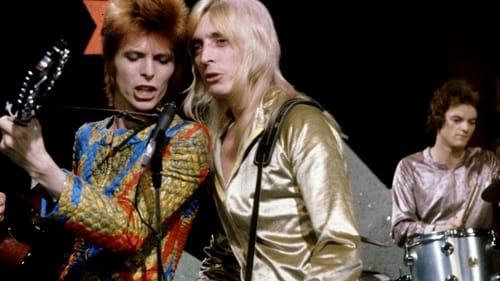
Camera Operator
Hammersmith Odeon, Londres, 3 de julio de 1973. El cantante británico David Bowie interpreta por última vez a su alter ego Ziggy Stardust. Un espectáculo decadente, un collage alucinógeno de kitsch, ironía pop y excesos extravagantes: una simbiosis musical de pasión femenina y dominio masculino que define el arte de Bowie y el glam rock.

Director
Hammersmith Odeon, Londres, 3 de julio de 1973. El cantante británico David Bowie interpreta por última vez a su alter ego Ziggy Stardust. Un espectáculo decadente, un collage alucinógeno de kitsch, ironía pop y excesos extravagantes: una simbiosis musical de pasión femenina y dominio masculino que define el arte de Bowie y el glam rock.

Director
The filmmakers accompany Alan Schneider, director of the American premieres of most of Beckett's plays, and producer Daniel Labeille to the home of Billie Whitelaw, whom Schneider, ironically, had never met previously, and takes us through the rehearsal process of Beckett's newest play, including the recording of the dialogue, as almost all of it is voiceover. The final fifteen minutes of the film are the premiere performance in its entirety.

Reader - Film as a Visual Newspaper (voice)
A documentary overview of silent cinema pioneer Edwin S. Porter.

Director
In 1973, John DeLorean was most likely going to be the next president of General Motors, when he turned his back on his $650,000 a year job and focused on a grander dream... to build his own car company (the first new American car company since 1925). In 1978, DeLorean built the most advanced auto factory in the world in under 18 months, from the ground up in a small suburb of Belfast, Northern Ireland.
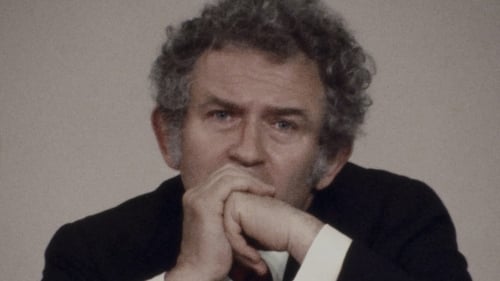
Director of Photography
Norman Mailer and a panel of feminists — Jacqueline Ceballos, Germaine Greer, Jill Johnston, and Diana Trilling — debate the issue of Women's Liberation.

Producer
Norman Mailer and a panel of feminists — Jacqueline Ceballos, Germaine Greer, Jill Johnston, and Diana Trilling — debate the issue of Women's Liberation.

Director
Norman Mailer and a panel of feminists — Jacqueline Ceballos, Germaine Greer, Jill Johnston, and Diana Trilling — debate the issue of Women's Liberation.

Editor
Surrounded by his children, his wife Ethel, and Sammy Davis, Jr., RFK visits schoolchildren around the city, and is every bit the good patriarch and dutiful public servant. But it’s the films’ fleeting, in-between, moments where Pennebaker most precisely hits the mark, offering reflection on the possibilities that Robert Kennedy’s all too brief life foreclosed. Set against the pageantry of a long ago Christmas, the film speaks to tragic contingencies of history lying far beyond the ken of politics that continue to circumscribe the tortured destiny of our country.

Cinematography
Surrounded by his children, his wife Ethel, and Sammy Davis, Jr., RFK visits schoolchildren around the city, and is every bit the good patriarch and dutiful public servant. But it’s the films’ fleeting, in-between, moments where Pennebaker most precisely hits the mark, offering reflection on the possibilities that Robert Kennedy’s all too brief life foreclosed. Set against the pageantry of a long ago Christmas, the film speaks to tragic contingencies of history lying far beyond the ken of politics that continue to circumscribe the tortured destiny of our country.

Producer
Surrounded by his children, his wife Ethel, and Sammy Davis, Jr., RFK visits schoolchildren around the city, and is every bit the good patriarch and dutiful public servant. But it’s the films’ fleeting, in-between, moments where Pennebaker most precisely hits the mark, offering reflection on the possibilities that Robert Kennedy’s all too brief life foreclosed. Set against the pageantry of a long ago Christmas, the film speaks to tragic contingencies of history lying far beyond the ken of politics that continue to circumscribe the tortured destiny of our country.

Director
Surrounded by his children, his wife Ethel, and Sammy Davis, Jr., RFK visits schoolchildren around the city, and is every bit the good patriarch and dutiful public servant. But it’s the films’ fleeting, in-between, moments where Pennebaker most precisely hits the mark, offering reflection on the possibilities that Robert Kennedy’s all too brief life foreclosed. Set against the pageantry of a long ago Christmas, the film speaks to tragic contingencies of history lying far beyond the ken of politics that continue to circumscribe the tortured destiny of our country.

Director
Documentary feature. 16mm; color; sound.
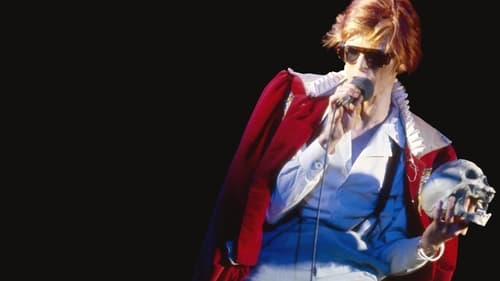
Thanks
The documentary depicts Bowie on tour in Los Angeles, using a mixture of vérité sequences filmed in limousines and hotels, and concert footage. Most of the concert footage was taken from a show at the Los Angeles Universal Amphitheatre on 2 September 1974 (Also featured are excerpts from D.A. Pennebaker's concert film shot at London's Hammersmith Odeon on 3 July 1973). Cracked Actor is notable for being a source for footage of Bowie's ambitious Diamond Dogs tour, and also for showing Bowie's fragile mental state during this period.
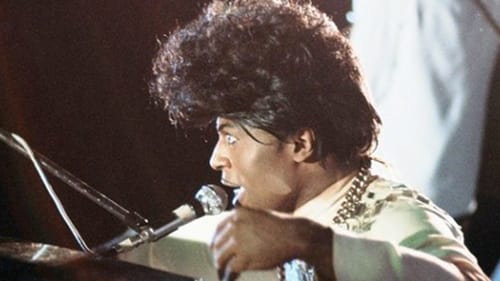
Director of Photography
Keep On Rockin', aka Little Richard: Keep On Rockin' (USA video title) is a film of a 1969 Little Richard concert at the Sweet Toronto Peace Festival, originally released in 1970. Richard performs a number of his greatest hits, including "Good Golly Miss Molly," "Long Tall Sally," and "Tutti Frutti." The film is in color.

Producer
Keep On Rockin', aka Little Richard: Keep On Rockin' (USA video title) is a film of a 1969 Little Richard concert at the Sweet Toronto Peace Festival, originally released in 1970. Richard performs a number of his greatest hits, including "Good Golly Miss Molly," "Long Tall Sally," and "Tutti Frutti." The film is in color.

Director
Keep On Rockin', aka Little Richard: Keep On Rockin' (USA video title) is a film of a 1969 Little Richard concert at the Sweet Toronto Peace Festival, originally released in 1970. Richard performs a number of his greatest hits, including "Good Golly Miss Molly," "Long Tall Sally," and "Tutti Frutti." The film is in color.

Camera Operator
Eat the Document is a documentary of Bob Dylan's 1966 tour of the United Kingdom with the Hawks. It was shot under Dylan's direction by D. A. Pennebaker, whose groundbreaking documentary Dont Look Back chronicled Dylan's 1965 British tour. The film was originally commissioned for the ABC television series Stage '66. Though shooting had completed for the film, Dylan's July 1966 motorcycle accident delayed the editing process. Once well enough to work again, Dylan edited the film himself. ABC rejected the film as incomprehensible for a mainstream audience.
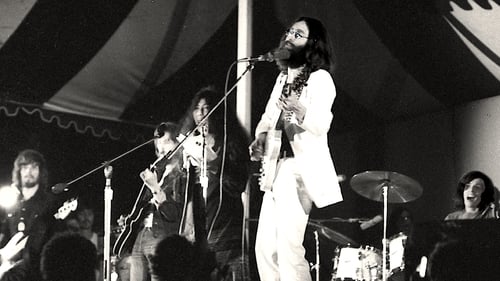
Director
Sweet Toronto is a documentary by D.A. Pennebaker of the Toronto Rock and Roll Revival, a one day festival held September 13, 1969 at Varsity Stadium on the campus of the University of Toronto and attended by some 20,000 persons. John Lennon played as part of the Plastic Ono Band, whose members also included Yoko Ono, Klaus Voorman, Alan White, and Eric Clapton. The video also features a selection of other acts: Jerry Lee Lewis, Little Richard, and Bo Diddley.

The film consists of continuous panning shots up a series of 367 human legs.

Director
Lighter and livelier than the films Jean-Luc Godard had made in France, his U.S. collaboration with Direct Cinema documentarian D. A. Pennebaker was meant to be One A.M., as in “one American movie”; but Godard quit the project and the U.S., where to his dismay he discovered that revolution wasn’t imminent, and Pennebaker edited Godard’s material, to which he and Richard Leacock even added a bit more, releasing the result as One P.M., as in “one parallel movie.” It’s a stunning mixture of cinéma-vérité, political theater, and interviews of key sixties figures.
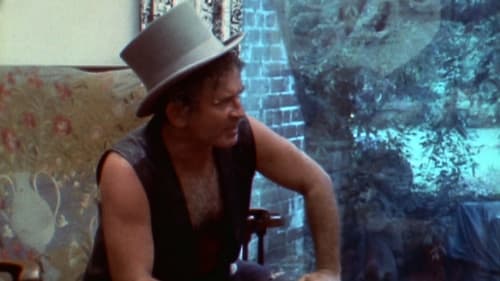
Director of Photography
Over a booze-fueled, increasingly hectic five-day shoot in East Hampton, Norman Mailer and his cast and crew spontaneously unloaded onto film the lurid and loony chronicle of U.S. presidential candidate and filmmaker Norman T. Kingsley debating and attacking his hangers-on and enemies. This gonzo narrative, “an inkblot test of Mailer’s own subconscious” (Time), becomes something like a documentary on its own making when costar Rip Torn breaks the fourth wall in one of cinema’s most alarming on-screen outbursts.
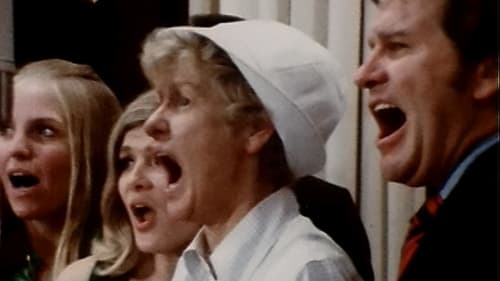
Director of Photography
In 1970, right after the triumphant premiere of Stephen Sondheim’s groundbreaking concept musical Company, the renowned composer and lyricist, his director Harold Prince, the show’s stars, and a large pit orchestra all went into a Manhattan recording studio as part of a time-honored Broadway tradition: the making of the original cast album. What ensued was a marathon session in which, with the pressures of posterity and the coolly exacting Sondheim’s perfectionism hanging over them, all involved pushed themselves to the limit.

Director
In 1970, right after the triumphant premiere of Stephen Sondheim’s groundbreaking concept musical Company, the renowned composer and lyricist, his director Harold Prince, the show’s stars, and a large pit orchestra all went into a Manhattan recording studio as part of a time-honored Broadway tradition: the making of the original cast album. What ensued was a marathon session in which, with the pressures of posterity and the coolly exacting Sondheim’s perfectionism hanging over them, all involved pushed themselves to the limit.

Director
Alice Cooper and band’s first performance, organized by his friend Frank Zappa, at the Toronto Rock and Roll Revival in 1969.
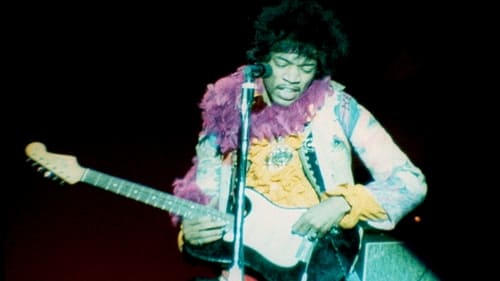
Camera Operator
Este documental muestra los mejores momentos del famoso festival californiano en 1967, incluyendo artistas como Mamas And The Papas, Simon & Garfunkel, Jefferson Airplane, The Who, Otis Redding o Jimi Hendrix Experience.

Director
Este documental muestra los mejores momentos del famoso festival californiano en 1967, incluyendo artistas como Mamas And The Papas, Simon & Garfunkel, Jefferson Airplane, The Who, Otis Redding o Jimi Hendrix Experience.

Director
George Plimpton attends the annual children’s fair of local pets, at the Virginia home of Robert and Ethel Kennedy, with Art Buchwald as ringmaster.

Director
An unreleased concert film, shot at the Generation Club on 8th St. in NYC on April 7, 1968. Big Brother & The Holding Co. "Summertime" Joni Mitchell "Sisotowbell Lane" Buddy Guy "Stormy Monday" Jimi Hendrix with Hugh McCracken B.B. King with Paul Butterfield and Elvin Bishop Richie Havens "All Along The Watchtower/Sing This All Together"

Director of Photography
Norman Mailer’s first feature filmmaking effort stars the director and his two longtime collaborators Buzz Farbar and Mickey Knox as a trio of gangsters holed up in a ramshackle New York apartment, drinking, braying, and fighting.

Writer
Norman Mailer’s first feature filmmaking effort stars the director and his two longtime collaborators Buzz Farbar and Mickey Knox as a trio of gangsters holed up in a ramshackle New York apartment, drinking, braying, and fighting.

Al
Norman Mailer’s first feature filmmaking effort stars the director and his two longtime collaborators Buzz Farbar and Mickey Knox as a trio of gangsters holed up in a ramshackle New York apartment, drinking, braying, and fighting.

Director
Leacock and Pennebaker filmed choreographer Merce Cunningham’s dance “RainForest” as part of the 1968 Buffalo Arts Festival’s program “Whose Afraid of the Avant-Garde” presenting experimental art, music, dance, poetry and theater. The dance composition also featured music by David Tudor, costumes by Jasper Johns and sets by Andy Warhol.

Director
Jean-Luc Godard visits the NYU in order to discuss his latest feature "La chinoise" with graduate students on filmmaking and politics.
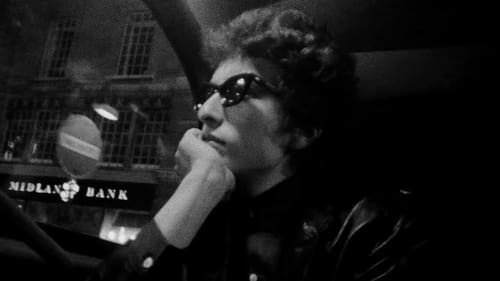
Camera Operator
Aclamado documental filmado por D.A. Pennebaker que cubre principalmente la gira británica ofrecida por Bob Dylan en la primavera de 1965, cuando el trobador folk americano, de nombre real Robert Allen Zimmerman, contaba sólo 23 años. La gira de Dylan, de apenas 3 semanas, es documentada detallada por una cámara que le sigue allí donde va, del aeropuerto al hotel, mostrando conversaciones y conciertos, además de contar con la aparición de otros artistas como Joan Baez, Donovan o Alan Price. Un documental que con el tiempo ha agrandado su importancia e influencia. (FILMAFFINITY)

Writer
Aclamado documental filmado por D.A. Pennebaker que cubre principalmente la gira británica ofrecida por Bob Dylan en la primavera de 1965, cuando el trobador folk americano, de nombre real Robert Allen Zimmerman, contaba sólo 23 años. La gira de Dylan, de apenas 3 semanas, es documentada detallada por una cámara que le sigue allí donde va, del aeropuerto al hotel, mostrando conversaciones y conciertos, además de contar con la aparición de otros artistas como Joan Baez, Donovan o Alan Price. Un documental que con el tiempo ha agrandado su importancia e influencia. (FILMAFFINITY)

Director
Aclamado documental filmado por D.A. Pennebaker que cubre principalmente la gira británica ofrecida por Bob Dylan en la primavera de 1965, cuando el trobador folk americano, de nombre real Robert Allen Zimmerman, contaba sólo 23 años. La gira de Dylan, de apenas 3 semanas, es documentada detallada por una cámara que le sigue allí donde va, del aeropuerto al hotel, mostrando conversaciones y conciertos, además de contar con la aparición de otros artistas como Joan Baez, Donovan o Alan Price. Un documental que con el tiempo ha agrandado su importancia e influencia. (FILMAFFINITY)

Director
A film by D.A. Pennebaker

Director
A film focusing on a day in the life of two identical twin girls, one of whom is blind and mentally handicapped

Producer
Description by D.A Pennebaker: "This movie is something of a mystery. Timothy Leary was getting married to a model named Nena Von Schlebrugge up in Millbrook, New York at the Hitchcock house, where Leary had been carrying on his hallucinogenic revelries for the past year or so after leaving Harvard. It was rumored that this was going to be the wedding of the season, the wedding of Mr. And Mrs. Swing as Cab Calloway put it. Blackwood took me downtown to meet Monte Rock III who was singing at Trudy Heller’s but who was also a very pricey and off-the-wall hairdresser and was in fact going to be doing the bride’s hair. Nena’s brother, Bjorn, known as the “Baron” was a friend of the Hitchcock’s, as was I, and the idea of going along and filming the wedding seemed not unwarranted. I’ve always wanted to film someone getting married."

Editor
Description by D.A Pennebaker: "This movie is something of a mystery. Timothy Leary was getting married to a model named Nena Von Schlebrugge up in Millbrook, New York at the Hitchcock house, where Leary had been carrying on his hallucinogenic revelries for the past year or so after leaving Harvard. It was rumored that this was going to be the wedding of the season, the wedding of Mr. And Mrs. Swing as Cab Calloway put it. Blackwood took me downtown to meet Monte Rock III who was singing at Trudy Heller’s but who was also a very pricey and off-the-wall hairdresser and was in fact going to be doing the bride’s hair. Nena’s brother, Bjorn, known as the “Baron” was a friend of the Hitchcock’s, as was I, and the idea of going along and filming the wedding seemed not unwarranted. I’ve always wanted to film someone getting married."

Camera Operator
Description by D.A Pennebaker: "This movie is something of a mystery. Timothy Leary was getting married to a model named Nena Von Schlebrugge up in Millbrook, New York at the Hitchcock house, where Leary had been carrying on his hallucinogenic revelries for the past year or so after leaving Harvard. It was rumored that this was going to be the wedding of the season, the wedding of Mr. And Mrs. Swing as Cab Calloway put it. Blackwood took me downtown to meet Monte Rock III who was singing at Trudy Heller’s but who was also a very pricey and off-the-wall hairdresser and was in fact going to be doing the bride’s hair. Nena’s brother, Bjorn, known as the “Baron” was a friend of the Hitchcock’s, as was I, and the idea of going along and filming the wedding seemed not unwarranted. I’ve always wanted to film someone getting married."

Director
Description by D.A Pennebaker: "This movie is something of a mystery. Timothy Leary was getting married to a model named Nena Von Schlebrugge up in Millbrook, New York at the Hitchcock house, where Leary had been carrying on his hallucinogenic revelries for the past year or so after leaving Harvard. It was rumored that this was going to be the wedding of the season, the wedding of Mr. And Mrs. Swing as Cab Calloway put it. Blackwood took me downtown to meet Monte Rock III who was singing at Trudy Heller’s but who was also a very pricey and off-the-wall hairdresser and was in fact going to be doing the bride’s hair. Nena’s brother, Bjorn, known as the “Baron” was a friend of the Hitchcock’s, as was I, and the idea of going along and filming the wedding seemed not unwarranted. I’ve always wanted to film someone getting married."

Director
Jazz vocalist Dave Lambert auditions a new group of singers at RCA Studios in 1964.

Director
The doc brings us back to a 1961 football game played in front of 40,000 people at the Orange Bowl. A high school football game, pitting Miami High against their rivals from Edison High. The title refers to the coaches of each, and the film follows them separately, with their real families and their clan of players, in the days leading up to the big event. And then at last it astonishingly chronicles the game from all kinds of angles you wouldn’t expect from even the newly mobile tools of the Drew crew. Today’s television coverage doesn’t come nearly as close to capturing the spirit of the sport and its fans the way Lipscomb does here. (Nothing But the Doc)

Director
Documentary focusing on 25 year-old actress Jane Fonda as she and her director Andreas Voutsinas prepare a stage play called The Fun Couple for Broadway.

Director
Susan Starr is a talented young concert pianist preparing for the biggest competition of her life. She also happens to have a terrible cold that keeps her in bed and an omnipresent mother. Battling against 34 of the most talented pianists in the world at the Metropolitan Opera House in New York, Susan hopes to win not only prize money in the Dimitri Mitropoulos International Piano Competition, but also the recognition that could launch the musical career for which she has been working since she was three years old. Following Susan through the hectic days leading up to the event and through the competition itself, the film captures the intense reality of an aspiring young artist facing the challenge of her life.

Director
The documentary traces Eddie Sachs (one of the most popular drivers in the history of the Indianapolis 500) in a behind-the-scenes look at the race from his perspective, starting from a week before the race through the day after the big event. You can feel the fervor and anticipation build (*pay close attention to the scaffolding that collapses with too many people on it during the race) as Eddie prepares to keep his place, "on the pole."
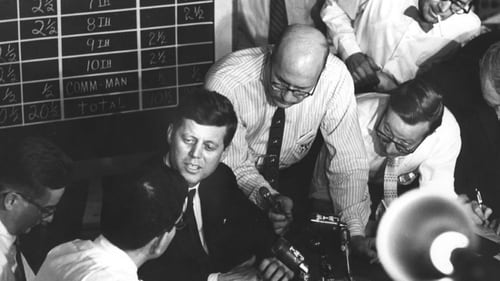
Director
A look at the daily business of U.S. President John F. Kennedy, with a focus on some of the political issues he faces six weeks into his term.

Camera Operator
A look at the daily business of U.S. President John F. Kennedy, with a focus on some of the political issues he faces six weeks into his term.

Director
During the fertile early years of Drew Associates following the breakthrough of Primary, came this seldom-seen portrait of David Allen, a jazz trumpeter struggling in the Santa Monica drug rehabilitation center Synanon House. Pennebaker’s love of music drew him to David and the film prefigures later portraits such as Dont Look Back. He teamed with Life photographer William Ray and producer Gregory Shuker.

Cinematography
After the US forces Cuba out of the OAS, demonstrations erupt in Venezuela. In Cuba Castro addresses a rally of one million people.
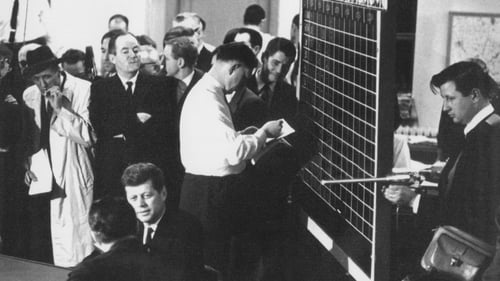
Camera Operator
Primary is a documentary film about the primary elections between John F. Kennedy and Hubert Humphrey in 1960. Primary is the first documentary to use light equipment in order to follow their subjects in a more intimate filmmaking style. This unconventional way of filming created a new look for documentary films where the camera’s lens was right in the middle of what ever drama was occuring.

Sound Recordist
Primary is a documentary film about the primary elections between John F. Kennedy and Hubert Humphrey in 1960. Primary is the first documentary to use light equipment in order to follow their subjects in a more intimate filmmaking style. This unconventional way of filming created a new look for documentary films where the camera’s lens was right in the middle of what ever drama was occuring.

Music
Twins Christopher and David gets into an untethered sailboat and inadvertently gets involved in a nearby sailboat race.

Screenplay
Twins Christopher and David gets into an untethered sailboat and inadvertently gets involved in a nearby sailboat race.

Editor
Primary is a documentary film about the primary elections between John F. Kennedy and Hubert Humphrey in 1960. Primary is the first documentary to use light equipment in order to follow their subjects in a more intimate filmmaking style. This unconventional way of filming created a new look for documentary films where the camera’s lens was right in the middle of what ever drama was occuring.
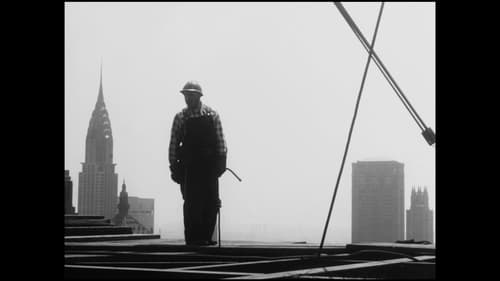
Director
Nominated for an Academy Award, this live-action short film playfully chronicles the construction of the Tishman Building at 666 Fifth Avenue in New York City.

Director
In 1959, George Nelson designed an incredible trade fair to be sent to Russia, a kind of yard sale of things American. Everything from automatic vacuum cleaners and refrigerators, to Polaroid cameras and newly pioneered videotape, as well as books not available under Stalinist rule were represented as the fruits of the capitalist American consumer market. Vice President Richard Nixon and Soviet Premier Nikita Khrushchev held the famous “Kitchen Debates” in a kitchen at the fair. With dancers and music from Oklahoma, films by Charles Eames and a huge dome by Buckminster Fuller, the Russians got their first glimpse of what was happening on the other side of the Curtain.

Cinematography
A coach’s whole career depends upon winning this football game, the U.S. Air Force Academy against the University of Colorado. The film was an early experiment by Drew and his Associates to capture real life happening in front of the cameras. They had not yet developed the new equipment that would allow portable sync-sound filming, so they improvised. Drew, who was still a correspondent for LIFE Magazine at the time, was trying to make films that would promote LIFE stories on television. This idea was how Drew had convinced Time-Life to bankroll his fledgling film unit. Although the football story never became a LIFE magazine cover story, it served as a kind of dry-run for a film about another football game covered by Drew and his Associates four years later. That film, “Mooney vs. Fowle,” led by filmmaker James Lipscomb, became an award-winning, groundbreaking documentary.

Director
A collection of twenty short films, averaging 2-3 minutes, by various filmmakers depicting American life, intended to be shown in a continuous loop at the American Pavilion of the 1958 Brussels World’s Fair. Some releases of the film include ten extra minutes of rough cuts.
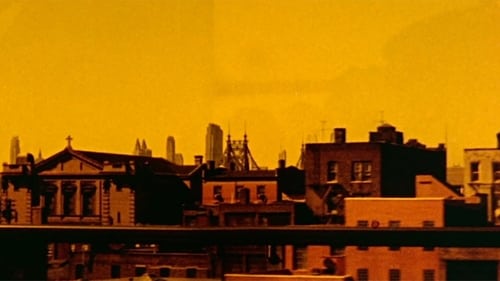
Editor
Brioso corto documental sobre el amanecer neoyorquino, visto desde un tren. Con un dinámico montaje, y a ritmo de jazz, se ofrece un asombroso y colorido puzzle de imágenes; cuadros maravillosos, de subyugante belleza, que recuerdan a las imágenes azarosas que se forman caprichosamente en un caleidoscopio.

Director of Photography
Brioso corto documental sobre el amanecer neoyorquino, visto desde un tren. Con un dinámico montaje, y a ritmo de jazz, se ofrece un asombroso y colorido puzzle de imágenes; cuadros maravillosos, de subyugante belleza, que recuerdan a las imágenes azarosas que se forman caprichosamente en un caleidoscopio.

Writer
Brioso corto documental sobre el amanecer neoyorquino, visto desde un tren. Con un dinámico montaje, y a ritmo de jazz, se ofrece un asombroso y colorido puzzle de imágenes; cuadros maravillosos, de subyugante belleza, que recuerdan a las imágenes azarosas que se forman caprichosamente en un caleidoscopio.

Director
Brioso corto documental sobre el amanecer neoyorquino, visto desde un tren. Con un dinámico montaje, y a ritmo de jazz, se ofrece un asombroso y colorido puzzle de imágenes; cuadros maravillosos, de subyugante belleza, que recuerdan a las imágenes azarosas que se forman caprichosamente en un caleidoscopio.

Director
I had contrived a scenario in which she ran mindlessly by cages of various animals paying them no heed while they, subject to edited inserts, would appear as excited Stacy observers. I had not fully mastered the tripod and suddenly in the middle of a jerky pan from a drinking fountain the entire tripod is sent flying and never reappears. In fact it has yet to be replaced. Stacy, bored with animals sets out to explore some noises she hears and ends up discovering a merry-go-round. When I finally catch up and help get her up on one of those huge horses for the first time, I see the look on her face, and I know. There’s the film. I should be watching not directing. The unplanned seems to me more interesting always, or at least more possible than the planned. That’s really the film I’ve been trying to make ever since. - D.A. Pennebaker

Director
Interviews and footage document the life and work of dancer Bessie Schonberg.







































































































